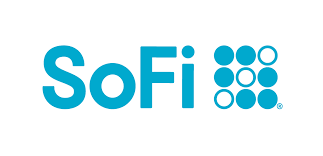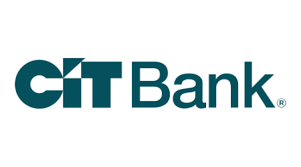When it comes to saving money, you've probably heard the term "APY" tossed around a few times. But what does it actually mean? With all the financial jargon out there, it's easy to feel like you need a degree in economics just to understand how your money is growing.
I'm here to simplify things for you. After working with Motley Fool Money's savings account picks for years, plus my own high-yield savings account journey, I've learned a lot about making your money work harder.
In this guide, I'll break down what APY is, how it affects your savings, and how to find the best APY for your money. Ready to make your savings work harder for you? Let's dive in.
What is APY?
Annual percentage yield (APY) is the rate at which your savings will grow over the course of a year. It's a key number to understand when choosing a savings account because it tells you how much interest you'll earn on your balance over time.
APY isn't directly tied to the federal funds rate, but it typically moves in sync with it, which means it's influenced by the broader economy and inflation. Since APYs can change anytime based on these factors, it's a good idea to keep an eye on the rate your bank is offering.
What is considered a "good" APY?
Because APYs fluctuate with the economy, what counts as a "good" APY also changes.
In spring 2024, high-yield savings accounts (HYSAs) were offering up to 5.00%. By spring 2025, with the Fed finally lowering the federal funds rate, a solid HYSA APY is closer to 3.70%-4.00%. For traditional savings accounts, a good APY is typically around 1.00%.
I've seen this firsthand with my own account. When I opened my LendingClub high-yield savings account in 2022, my starting APY was 4.00%. Over time, it climbed to 4.65% before settling currently at 4.00% APY with $250+ in monthly deposits. It's a perfect example of how APYs constantly shift and why what's considered a "good" rate depends on when you're looking.
Compare savings rates
Make sure you're getting the best account for you by comparing savings rates and promotions. Here are some of our favorite high-yield savings accounts to consider.
| Account | APY | Bonus | Next Steps |
|---|---|---|---|

Open Account for SoFi Checking and Savings
On SoFi's Secure Website.
4.90/5
Our ratings are based on a 5 star scale.
5 stars equals Best.
4 stars equals Excellent.
3 stars equals Good.
2 stars equals Fair.
1 star equals Poor.
We want your money to work harder for you. Which is why our ratings are biased toward offers that deliver versatility while cutting out-of-pocket costs.
|
up to 4.00%
Rate info
Earn up to 4.00% Annual Percentage Yield (APY) on SoFi Savings with a 0.70% APY Boost (added to the 3.30% APY as of 12/23/25) for up to 6 months. Open a new SoFi Checking and Savings account and pay the $10 SoFi Plus subscription every 30 days OR receive eligible direct deposits OR qualifying deposits of $5,000 every 31 days by 1/31/26. Rates variable, subject to change. Terms apply at sofi.com/banking#2. SoFi Bank, N.A. Member FDIC.
Min. to earn: $0
|
Earn $50 or $300 and +0.70% Boost on Savings APY with direct deposit. Terms apply.
Earn up to 4.00% Annual Percentage Yield (APY) on SoFi Savings with a 0.70% APY Boost (added to the 3.30% APY as of 12/23/25) for up to 6 months. Open a new SoFi Checking and Savings account and pay the $10 SoFi Plus subscription every 30 days OR receive eligible direct deposits OR qualifying deposits of $5,000 every 31 days by 1/31/26. Rates variable, subject to change. Terms apply at sofi.com/banking#2. SoFi Bank, N.A. Member FDIC. |
Open Account for SoFi Checking and Savings
On SoFi's Secure Website. |

Open Account for CIT Platinum Savings
On CIT's Secure Website.
4.60/5
Our ratings are based on a 5 star scale.
5 stars equals Best.
4 stars equals Excellent.
3 stars equals Good.
2 stars equals Fair.
1 star equals Poor.
We want your money to work harder for you. Which is why our ratings are biased toward offers that deliver versatility while cutting out-of-pocket costs.
|
3.75%
Rate info
3.75% APY for balances of $5,000 or more; otherwise, 0.25% APY
Min. to earn: $5,000
|
Earn a bonus of up to $300 after a one-time deposit of $25,000+
This limited-time offer to qualify for a $225 cash bonus with a minimum deposit of $25,000 or a $300 bonus with a minimum deposit of $50,000 is available to New and Existing Customers who meet the Platinum Savings promotion criteria. The Promotion begins on September 23, 2025, and can end at any time without notice. Customers will receive a $225 or a $300 bonus provided that the program requirements are met. Click here to see promotion details and terms: https://www.cit.com/cit-bank/platinum-savings/PS2025 |
Open Account for CIT Platinum Savings
On CIT's Secure Website. |

Open Account for Western Alliance Bank High-Yield Savings Premier
On Western Alliance Bank's Secure Website.
4.40/5
Our ratings are based on a 5 star scale.
5 stars equals Best.
4 stars equals Excellent.
3 stars equals Good.
2 stars equals Fair.
1 star equals Poor.
We want your money to work harder for you. Which is why our ratings are biased toward offers that deliver versatility while cutting out-of-pocket costs.
|
3.90%
Rate info
The annual percentage yield (APY) is accurate as of December 2, 2025 and subject to change at the Bank’s discretion. Refer to product’s website for latest APY rate. Minimum deposit required to open an account is $500 and a minimum balance of $0.01 is required to earn the advertised APY.
Min. to earn: $500 to open, $0.01 for max APY
|
N/A
|
Open Account for Western Alliance Bank High-Yield Savings Premier
On Western Alliance Bank's Secure Website. |
Platinum Savings is a tiered interest rate account. Interest is paid on the entire account balance based on the interest rate and APY in effect that day for the balance tier associated with the end-of day account balance. *APYs — Annual Percentage Yields are accurate as of November 20, 2025: 0.25% APY on balances of $0.01 to $4,999.99; 3.75% APY on balances of $5,000.00 or more. Interest Rates for the Platinum Savings account are variable and may change at any time without notice. The minimum to open a Platinum Savings account is $100.
Based on comparison to the national average Annual Percentage Yield (APY) on savings accounts as published in the FDIC National Rates and Rate Caps, accurate as of December 15, 2025.
For complete list of account details and fees, see our Personal Account disclosures.
The annual percentage yield (APY) is accurate as of December 2, 2025 and subject to change at the Bank’s discretion. Refer to product’s website for latest APY rate. Minimum deposit required to open an account is $500 and a minimum balance of $0.01 is required to earn the advertised APY.
Accurate as of the time of publication. The national average rate referenced is from the FDIC’s published National Rates and Rate Caps for Savings deposit products, accurate as of November 17, 2025. See the FDIC website for more information.
How do high-yield savings accounts compare?
A high-yield savings account will always offer higher APYs than a traditional savings account. In fact, most of the time, you'll see an HYSA offering up to 10 times the APY of a traditional savings account. Yes, you read that right -- 10 times higher!
Traditional savings accounts are generally best for those who frequently transfer money in and out for day-to-day expenses. But if you're looking to park emergency savings, a down payment, or a vacation fund somewhere safe and let it grow, a high-yield savings account is exactly what you need. Think of it as a more long-term, hands-off place for your money to work harder for you.
Why APY matters more in a high-yield savings account
When you're comparing the APYs of traditional savings accounts, say 0.01% vs. 0.05%, the difference is so small it's almost irrelevant. But when it comes to a high-yield savings account, APY becomes a big deal.
The reason you're putting your money into a HYSA is to let it grow over time. And the higher the APY, the more it's going to grow. So, when you're choosing a HYSA, you want to maximize that growth potential. That means finding the highest APY possible for your money.
How to choose the best high-yield savings account
Now that we know APY is important, let's talk about how to choose a high-yield savings account. Yes, the APY is a major factor, but it's not the only one. What good is a sky-high APY if the bank isn't reliable or the fees eat up all your hard-earned interest?
Here are a few more things to consider when shopping for an HYSA:
- Bank reputation and safety: Make sure your bank is FDIC insured, which means your money is protected up to $250,000 per depositor, per account ownership category. Then check out the bank's reputation -- go with one that has a solid track record and a reliable history. Bonus points if it's a bank you already bank with, because opening an account is a lot easier that way.
- Account fees: Fees can kill your earnings. Look for accounts with low or no fees -- especially those pesky maintenance fees, account opening fees, and anything else that might sneak up on you. The fewer fees, the more of your money stays where it belongs: in your account.
- Minimum balances or deposits: Some accounts require a minimum balance to earn the highest APY, or a minimum deposit to open the account. These aren't dealbreakers, and often these restrictions come with the best APYs. But make sure you can keep up with the minimums or you'll want to consider an account that doesn't have them.
- Withdrawal limits: Some HYSAs limit the number of withdrawals you can make each month, or they may place limits on the amount or location where you can access your money. It's important to make sure the account's limits fit your needs. If you're comfortable leaving your money alone and letting it grow, these limits won't be an issue. But if you plan on tapping into your savings more often, make sure those rules align with how you want to access your funds.
Find the right high APY account for you
Now that you've got a solid understanding of what makes a good APY, it's time to put that knowledge to work. With your baseline for a good APY, you're ready to start comparing different high-yield savings accounts and find the one that's right for you. Remember, it's all about getting the most out of your money while keeping it safe.
Take a look at our list of the best high-yield savings accounts. We've handpicked options with no fees, high APYs, and great reputations. Start shopping today -- you've got this!
FAQs
-
APYs are influenced by the federal funds rate, inflation, and overall economic conditions. When interest rates rise, banks usually offer higher APYs, and when rates drop, APYs tend to follow.
-
APY accounts for compound interest, meaning it reflects how much your money will grow over a year, including interest on your interest. A basic interest rate doesn't include compounding.
-
There's no set schedule -- banks adjust their rates based on market conditions. Some change monthly, while others adjust more frequently in response to Federal Reserve decisions.
-
Yes, banks can lower APYs at any time, especially if interest rates in the broader economy fall. That's why it's smart to check your rate regularly and compare other options.